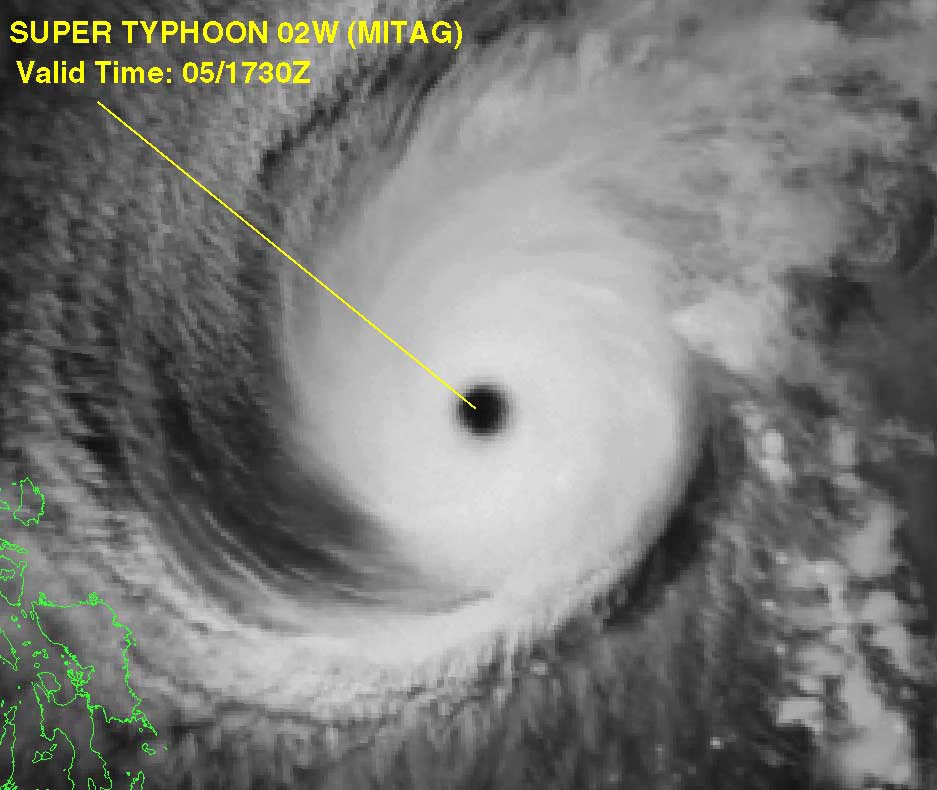|
CYCLONES |
|
CYCLONES, What causes them... Cyclones form after the ocean water warms up past 27 deg C (80 deg F). Warm water evaporates faster than cold water, so the air above has high amounts of water vapor. Water vapor that condenses to form cloud droplets gives off heat into the air. This heat is added to the tropical air that is already warm. This causes a large pulse of heat to rise high into the atmosphere. If surface winds and atmospheric winds are traveling in the same direction, the warm air is concentrated in one spot,
this then forms bands of spiraling thunderstorms. As they spin they blow inward toward the center, rain is very heavy in these bands, but between the bands it is raining lightly or not at all. The most violent band with the heaviest rain is the eyewall, which surrounds the eye or center of the cyclone. The average size of the eye is about 24 km (15 miles) in diameter. All the updrafts of the thunderstorms spread out when they hit the stratosphere forming a continuous cloud shield above the storm. Barometric pressure in the middle of the mass drops, causing the wind speed to increase. This wind whips the ocean into a spray, causing even further increase in evaporation. Within a few days the heat, moisture, pressure and wind whip each other into a full blown Cyclone.
Psalm 107:23-30 And then there are the sailors sailing the seven seas, plying the trade routes of the world. They, too, observe the power of God in action. He calls to the storm winds; the waves rise high. Their ships are tossed to the heavens and sink again to the depths; the sailors cringe in terror. They reel and stagger like drunkards and are at their wit's end. Then they cry to the Lord in their trouble, and he saves them. He calms the storm and stills the waves. What a blessing is that stillness as he brings them safely into harbor!
Back
to index
|
